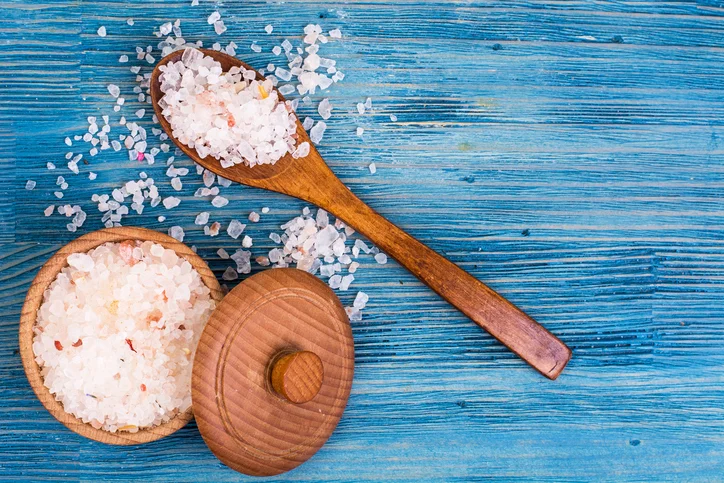5 common food myths exposed
/5 common food myths exposed
Maybe you don’t give it much thought but every day you make unconscious decisions about what you choose to eat. Some foods you choose may be healthy while others not so healthy.
But when it comes to discerning between what is a food truth or food myth can be confusing and hard to do sometimes. There is a multitude nutrition advice ranging from extremely helpful to extremely bad to downright dangerous. As a consumer and partaker of food (we all are), knowing the truth of how to follow a healthy, nutritious diet can get lost in the shuffle of nutrition myths that have grown exponentially over the years.
Unfortunately, there will always be those among us who without any nutrition degree or backing of science who feel obligated to enlighten us on their opinion on what a healthy diet should be. But don’t be swayed. Here are some common diet and food myths exposed since you deserve to know the truth behind the tale:
1. Brown eggs are more nutritious than white eggs
This nutrition myth has been around since the debate of which came first – the chicken or the egg. The truth to this myth is that the color of the egg shell is based on the type of hen that laid the egg and does not affect the quality or nutrition of the eggs. Brown eggs tend to be larger in size than white eggs and usually cost more to produce, which is often the reason for their higher price tag.
The nutritional value is the same on the inside, whether the color the shell is white or brown. In fact, eggs of any color are an excellent source of protein and lutein. Eggs are perfect for providing satiety so eating one or two eggs every day can be part of a healthy diet for most people.
2. Sea salt is healthier for you than regular or table salt
Sea salt is often promoted as being healthier than table salt. Yet both sea salt and table salt have the same basic nutritional value, so sea salt provides no health advantage over table salt. Both contain comparable amounts of sodium by weight.
Sea salt is produced through evaporation of ocean water or water from saltwater lakes, usually with little processing. Depending on the water source, this does leave behind certain trace minerals and elements. The minerals add flavor and color to sea salt which also comes in a variety of coarseness levels.
Table salt is typically mined from underground salt deposits. It is more heavily processed to eliminate minerals and usually contains an additive to prevent clumping. Most table salt has iodine added to it, an essential nutrient helping to maintain a healthy thyroid.
3. Any food that is cholesterol-free is automatically good for the heart
When a person has high blood cholesterol levels this can place them at a high risk for cardiovascular disease. It would seem to make sense to drastically lower your intake of foods high in cholesterol. But research advises that it is your intake of saturated fat that really needs to be reduced drastically and not so much cholesterol. Foods such as fruits, vegetables, whole grains, and beans are naturally cholesterol-free and are perfectly good and healthy foods to choose from.
But, just because a food or food product is labeled “cholesterol-free,” they can still be high in fats, sodium, sugar and calories. Cholesterol is found only in food of animal origin – egg yolk, beef, chicken, fish, cheese, milk. Foods such as chips, sugary drinks, or donuts contain no cholesterol but should not be consumed on a regular basis due to their sugar, fat, sodium and calorie content.
4. Raw sugar is healthier than white sugar
The truth be known sugar is sugar no matter what form it comes in. Raw sugar, technically called Turbinado sugar, comes from sugarcane. Raw sugar has a darker color than white sugar and the crystals are larger but both have the same chemical composition – half fructose and half glucose. The main difference between raw sugar and white sugar is the boiling of the cane juice. The juice for refined or white sugar is boiled several times to remove all the molasses, whereas Turbinado sugar is boiled only once.
By boiling only one time, the residual molasses gives raw sugar some flavor and texture other than just sweetness like white sugar. But it doesn’t provide any significant nutrition. White sugar and raw sugar are calorically identical. Raw or Turbinado sugar does contain calcium, iron, and potassium but in very trace amounts.
5. Organically grown foods are more nutritious than conventionally grown foods
This will always be a contentious debate and there may never be an end to arguments over whether organic foods are more nutritious than conventionally grown foods. Once only found in health food stores, organic foods have flooded grocery stores and are considered here to stay. The word “organic” refers to the way farmers grow and process agricultural products. Farmers who grow organic foods don’t use conventional methods to fertilize and control weeds.
A couple of studies that compared organically grown foods with conventionally grown foods suggest that some organic foods may contain a little more vitamin C and some other nutrients. If there is any nutritional difference between the two, it is probably minimal.
The main reasons to choose organic foods are to avoid chemicals such as pesticides and it may help support local and sustainable agriculture. But even fruits and veggies that aren’t organic are nutritious and good for you - simply eating more produce, organic or conventional – will benefit your health either way.

